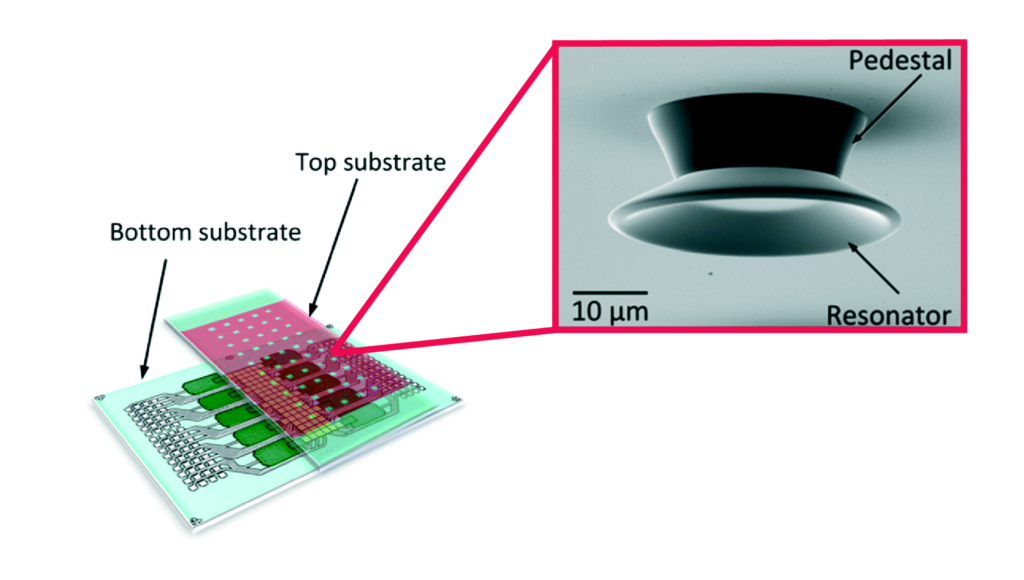If you’ve ever visited St. Paul’s Cathedral in London or Grand Central Terminal in New York, you may be familiar with the interesting acoustic phenomenon termed a “whispering gallery”. The domed geometry of these structures allows sound to echo around the chambers such that a whisper spoken along the wall on one side can be clearly heard at the other end. This phenomenon can also apply to light, and microstructures tuned to a specific wavelength of light can be used as resonating sensors. Whispering-gallery mode (WGM) micro-goblet lasers use this phenomenon and can detect changes in the refractive index of the surrounding media as well as changes to the surface. This makes them ideal as label-free sensors that can detect changes to the surfaces of the microgoblets. When their surfaces are functionalized with capture moieties (e.g., antibodies, nucleic acids etc.) they can be used for sensitive label-free detection and would be a great tool to incorporate with microfluidics.
In their recent report, Wondimu et al. integrated arrays totaling 5,000 individually addressable sensors with a digital microfluidic (DMF) chip. DMF offers precise handling of nL-µL volume droplets in a compact format and with no moving parts. Typically, WGM sensors require coupling to fiber optics, but by doping the micro-goblets with organic dyes they can be operated as optically pumped lasers. This makes operating them less bulky and fits well with the streamlined philosophy behind DMF (i.e., no pumps, tubing, or connections). The fabrication of these large arrays is simple and relies on wet-etching and reflowing. Thus, scale-up is relatively straightforward. In their report, Wondimu et al. demonstrated the functionality of these sensors by testing liquids with different refractive indices as well as performing quantitative detection of streptavidin-biotin binding on the sensor surfaces. While these examples serve a demonstrative purpose, it will be possible to use these sensors for multiplexed affinity-based biosensing such as antibodies, nucleic acids, and aptamers. This will be a big leap for DMF as there haven’t been any examples of integrated multiplexed sensing on this scale before. One area where this could be applied to is the development of platforms to culture cells and perform multiplexed, label-free genetic analysis—a true micro total analysis system!
To download the full article for free* click the link below:
Integration of digital microfluidics with whispering-gallery mode sensors for label-free detection of biomolecules
Sentayehu F. Wondimu, Sebastian von der Ecken, Ralf Ahrens, Wolfgang Freude, Andreas E. Guber and Christian Koos
Lab Chip, 2017
DOI: 10.1039/C6LC01556E
*Free to access until 6th June 2017.
About the Webwriter
Darius Rackus is finishing his Ph.D. at the University of Toronto working in the Wheeler Lab. His research interests are in combining sensors with digital microfluidics for healthcare applications.












